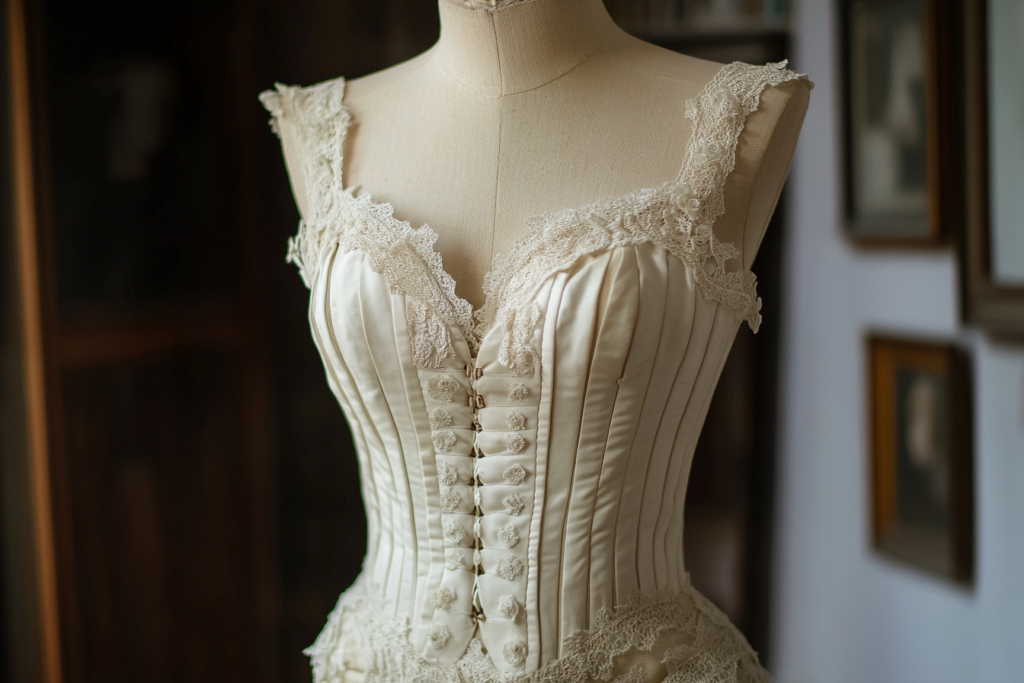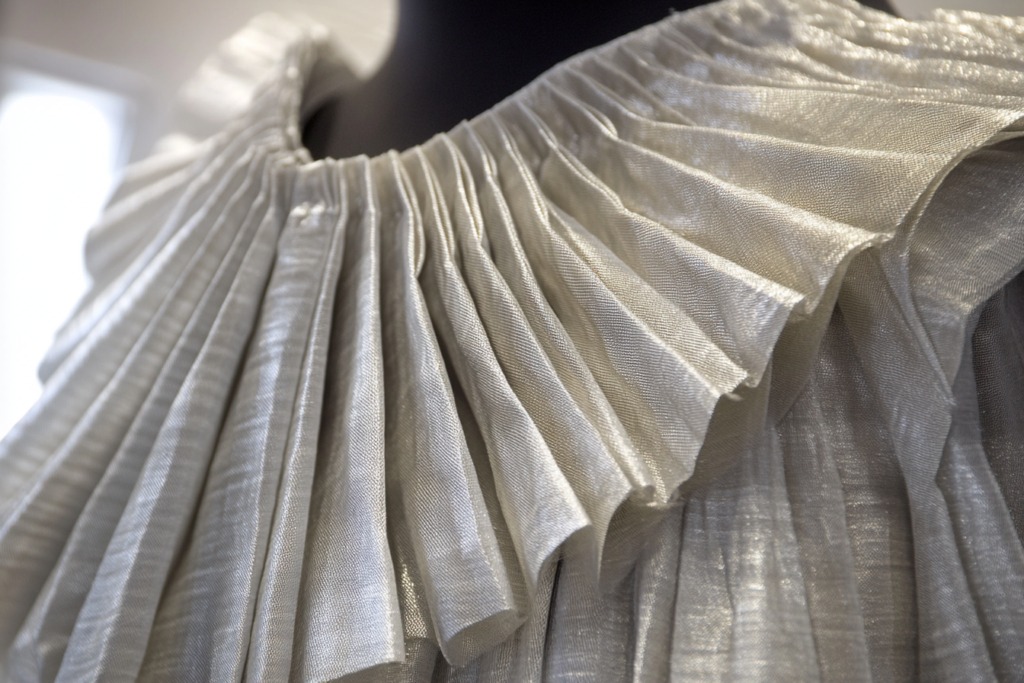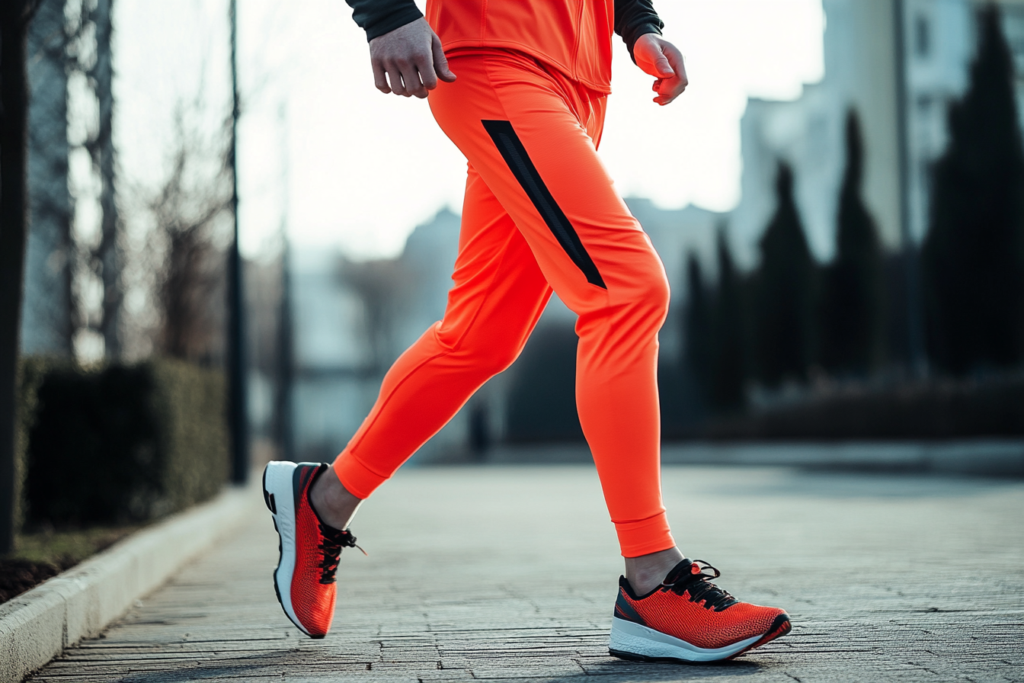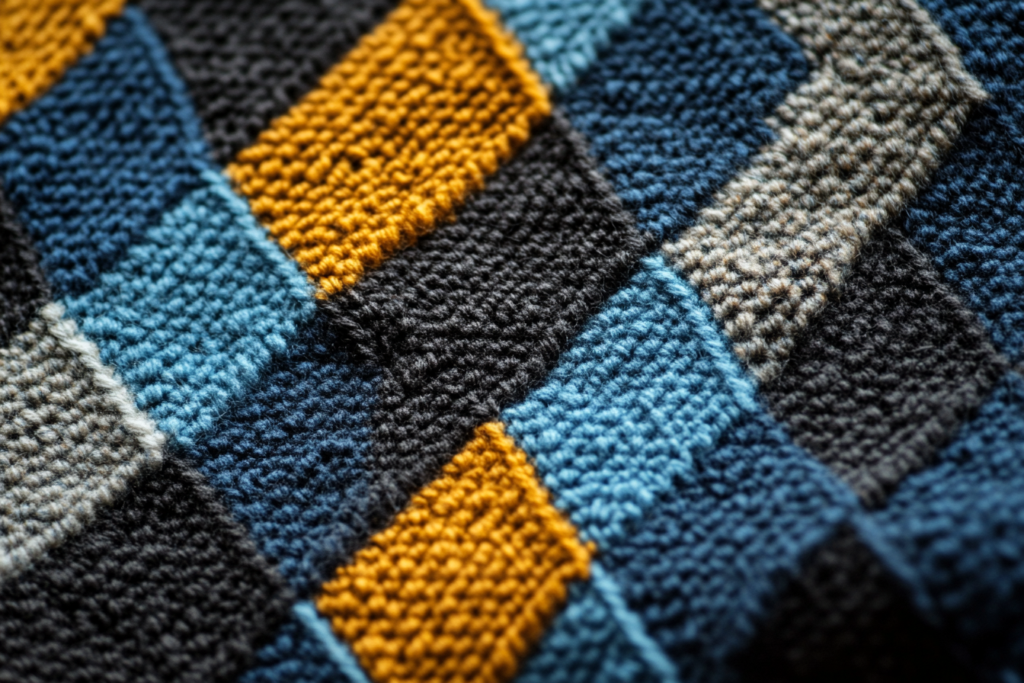Bodice: A Shaping Garment Between the Shoulders and Waist
Definition:
The bodice refers to the fitted part of a garment that covers the upper torso, generally between the shoulders and the waist. It is commonly seen as part of dresses, gowns, corsets, and tops, designed to provide structure and shape to the torso. This garment element has been a cornerstone of women’s fashion for centuries and continues to be an essential piece in both modern and vintage-inspired designs.
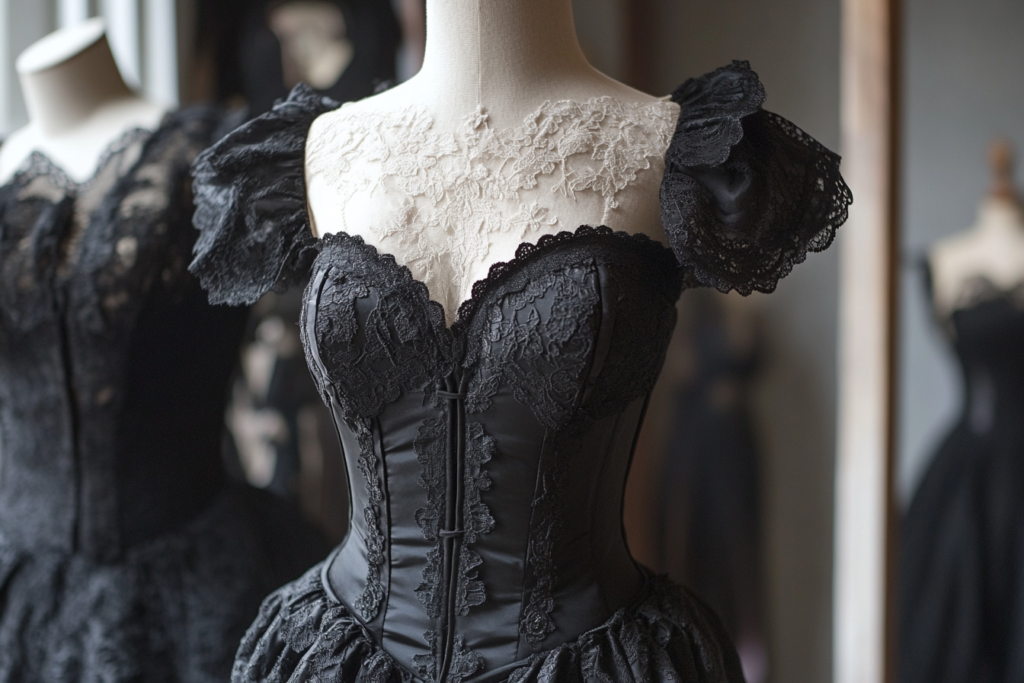
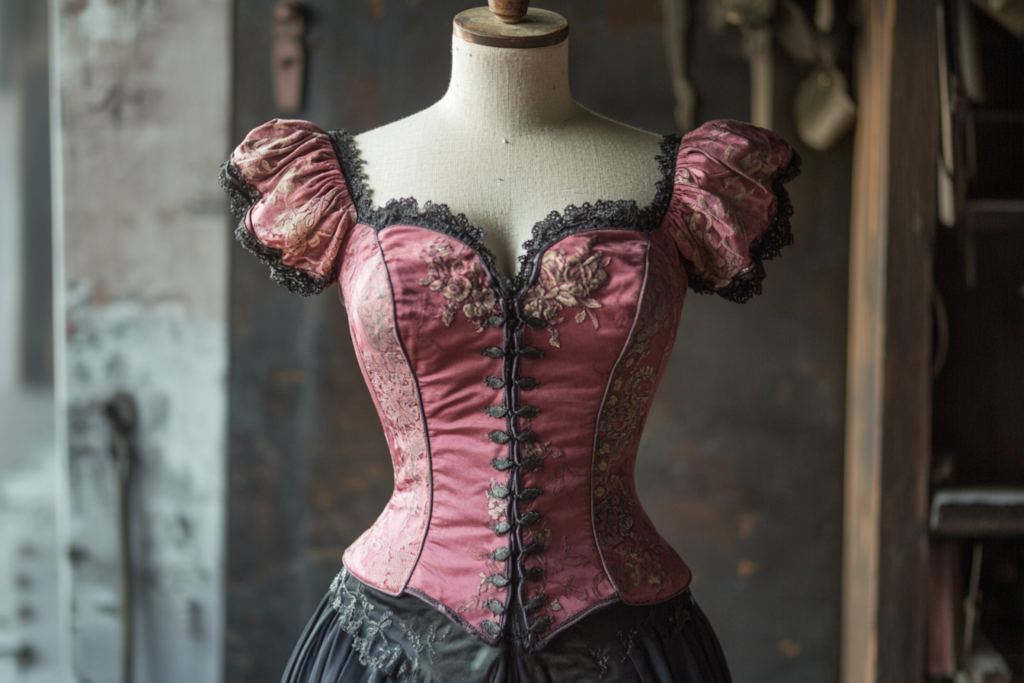
Key Features of a Bodice
- Position and Fit:
The bodice covers the area between the shoulders and waist, creating a fitted structure that emphasizes the body’s natural shape. It can be tailored closely to the body or may include boning or padding for additional support. - Variety of Styles:
Bodices come in a range of styles, depending on the garment’s overall design. These include:- Strapless bodice for a more daring and modern look.
- Long-sleeved bodice for formal wear or colder weather.
- V-neck or sweetheart necklines that add visual appeal.
- Materials Used:
The fabric chosen for the bodice impacts both the fit and the aesthetic of the garment. Common materials include:- Cotton, linen, and silk for softer, breathable designs.
- Satin, velvet, and brocade for more formal, structured bodices.
- Leather or denim for more casual, edgy looks.
Applications of the Bodice in Fashion
The bodice serves as the upper portion of many different garments, often playing a crucial role in their overall fit and appearance. Some common applications include:
- Dresses and Gowns:
Bodices are often integral parts of dresses, especially formal dresses, evening gowns, and wedding dresses. A well-designed bodice can help create a flattering silhouette by shaping the upper body and emphasizing the waistline. - Corsets:
A type of bodice designed to cinch the waist and create an hourglass figure, corsets are an iconic fashion item historically used to shape the torso. Modern-day corsets, often referred to as “shaping bodices,” can be worn under clothing or as outerwear, offering both aesthetic appeal and support. - Bustiers:
Similar to corsets, bustiers offer a structured fit for the bust and waist area. These bodices are commonly worn as outerwear and can be paired with skirts or pants for a trendy, fitted look. - Tops:
The bodice can be worn alone as a separate garment, such as in form-fitting tops, blouses, or bodysuits. These bodices are often styled with various necklines, sleeve options, and fabric choices, making them versatile staples in any wardrobe.
Advantages of the Bodice
- Shape and Support:
The primary function of the bodice is to shape the torso and provide support. Whether in a corset or a more modern design, bodices can enhance posture and create an elegant silhouette. - Tailoring and Fit:
The bodice offers designers the opportunity to tailor garments to a specific body shape. It’s the element that transforms a generic piece of fabric into a fitted, flattering garment that complements the wearer’s physique. - Versatility:
The bodice adapts to many styles, from vintage-inspired pieces to modern, minimalistic designs. It’s a key feature in both casual and formal fashion.
Example of Bodice in Fashion History
- Victorian Era:
During the Victorian era, the bodice was tightly fitted, often supported by boning and lace. Women would wear a structured bodice as part of their daily attire, sometimes paired with a full skirt or petticoat for added volume. - Modern Bridal Wear:
Today, the bodice is an essential part of bridal wear. Designers often create highly detailed bodices using lace, embroidery, and beading, making the bodice a focal point of the wedding dress. A well-crafted bodice ensures a perfect fit, allowing brides to feel supported and confident on their big day.
